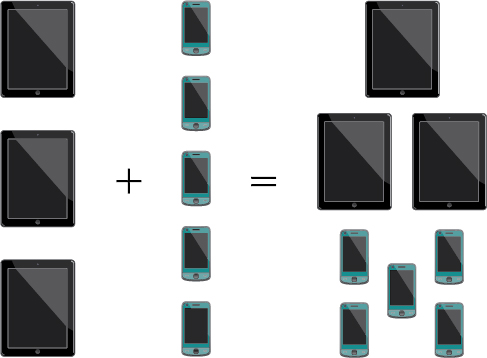| << Chapter < Page | Chapter >> Page > |
A new company sells customizable cases for tablets and smartphones. Each case comes in a variety of colors and can be personalized for an additional fee with images or a monogram. A customer can choose not to personalize or could choose to have one, two, or three images or a monogram. The customer can choose the order of the images and the letters in the monogram. The company is working with an agency to develop a marketing campaign with a focus on the huge number of options they offer. Counting the possibilities is challenging!
We encounter a wide variety of counting problems every day. There is a branch of mathematics devoted to the study of counting problems such as this one. Other applications of counting include secure passwords, horse racing outcomes, and college scheduling choices. We will examine this type of mathematics in this section.
The company that sells customizable cases offers cases for tablets and smartphones. There are 3 supported tablet models and 5 supported smartphone models. The Addition Principle tells us that we can add the number of tablet options to the number of smartphone options to find the total number of options. By the Addition Principle, there are 8 total options, as we can see in [link] .

According to the Addition Principle , if one event can occur in ways and a second event with no common outcomes can occur in ways, then the first or second event can occur in ways.
There are 2 vegetarian entrée options and 5 meat entrée options on a dinner menu. What is the total number of entrée options?
We can add the number of vegetarian options to the number of meat options to find the total number of entrée options.

There are 7 total options.
A student is shopping for a new computer. He is deciding among 3 desktop computers and 4 laptop computers. What is the total number of computer options?
7
The Multiplication Principle applies when we are making more than one selection. Suppose we are choosing an appetizer, an entrée, and a dessert. If there are 2 appetizer options, 3 entrée options, and 2 dessert options on a fixed-price dinner menu, there are a total of 12 possible choices of one each as shown in the tree diagram in [link] .

The possible choices are:
We could also conclude that there are 12 possible dinner choices simply by applying the Multiplication Principle.

Notification Switch
Would you like to follow the 'Algebra and trigonometry' conversation and receive update notifications?